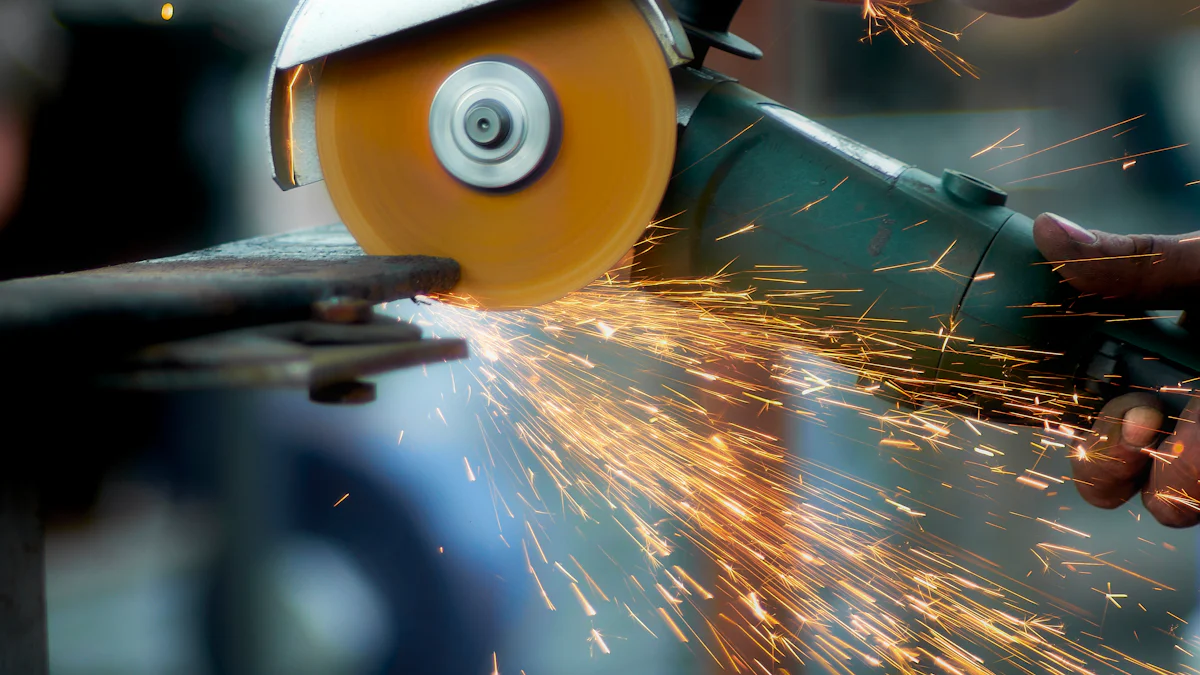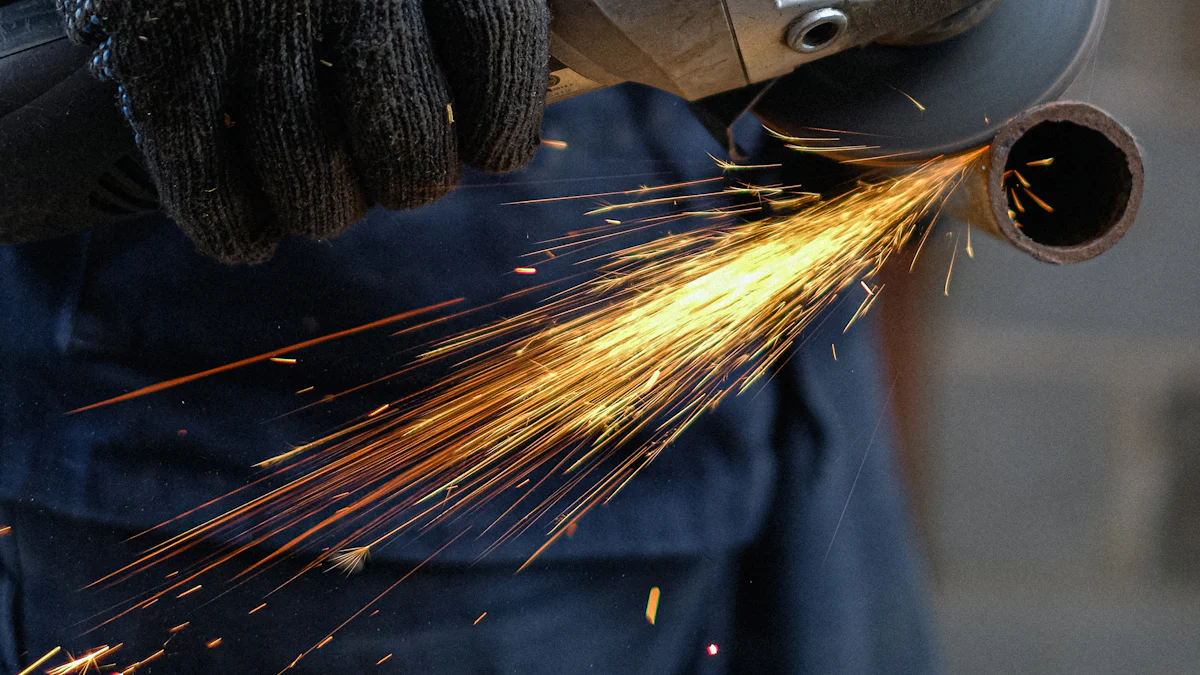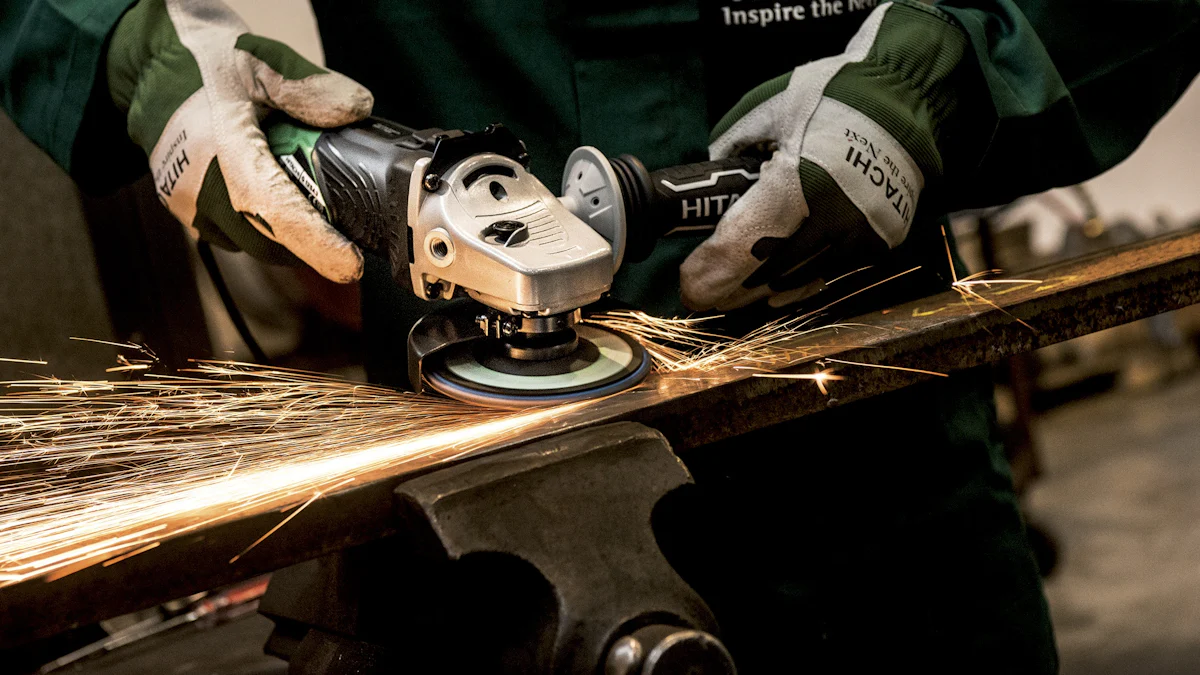
A Dremel tool stands out for its versatility and compact design. This high-speed multi-tool can handle various tasks, from sanding to cutting. Knowing how to use a Dremel tool to cut metal proves essential for many DIY projects. Cutting metal with precision opens up numerous possibilities. You can craft intricate designs or make precise modifications. Practical applications include home remodeling, crafting, and even automotive repairs. Mastering the Dremel tool to cut metal enhances your skill set and broadens your project capabilities.
Safety Considerations

Personal Protective Equipment (PPE)
Safety Glasses
Safety glasses protect your eyes from flying metal shards. These shards can cause serious eye injuries. Always wear safety glasses when cutting metal with a Dremel tool.
Gloves
Gloves shield your hands from sharp edges and hot surfaces. Metal can become very hot during cutting. Use gloves to prevent burns and cuts.
Hearing Protection
Hearing protection guards your ears against loud noises. The Dremel tool produces high-pitched sounds. Prolonged exposure can damage your hearing. Wear earplugs or earmuffs for safety.
Workspace Preparation
Ventilation
Good ventilation removes harmful fumes and dust. Cutting metal generates fine particles. Ensure your workspace has proper airflow. Open windows or use fans to keep the air clean.
Secure Work Area
A secure work area prevents accidents. Clear the workspace of any clutter. Make sure the metal piece is stable. Use clamps or vises to hold it in place.
Fire Safety
Fire safety is crucial when cutting metal. Sparks can ignite flammable materials. Keep a fire extinguisher nearby. Remove any combustible items from the area. Always stay alert to potential fire hazards.
Choosing the Right Dremel Tool and Accessories
Types of Dremel Tools
Corded vs. Cordless
Choosing between a corded and cordless Dremel tool depends on your needs. A corded Dremel tool offers consistent power. This makes it ideal for long projects. The Dremel 4250 provides more power and versatility. This model suits both beginners and advanced users.
A cordless Dremel tool provides mobility. This makes it perfect for tasks in tight spaces. The Dremel Multi-tool is compact and flexible. This tool appeals to craftsmen and hobbyists alike. Consider the project requirements before deciding.
Variable Speed Options
Variable speed options enhance control. Different materials require different speeds. The Dremel 3100 features a 1.2 Amp motor. This delivers 33 percent more power than older models. Adjusting the speed ensures precise cuts. Always start at a lower speed. Gradually increase as needed.
Selecting the Right Cutting Wheel
Metal Cutting Discs
Metal cutting discs are essential for cutting metal. These discs slice through various metals. The Dremel EZ Lock Metal Cut Off Wheels (EZ456) are highly recommended. These wheels cut through hardened steel. Always use discs designed for metal. This ensures efficiency and safety.
Reinforced Wheels
Reinforced wheels offer added durability. These wheels withstand more pressure. This makes them ideal for thicker metals. Reinforced wheels prevent breakage. This extends the life of your cutting tools. Always check the wheel specifications. Ensure compatibility with your Dremel tool.
Preparing the Metal for Cutting
Marking the Cut Line
Using a Marker or Scribe
Use a marker or scribe to draw the cut line. A marker provides a clear, visible line on the metal surface. A scribe creates a fine, precise line. Choose the tool based on the level of detail needed.
Measuring Tools
Accurate measurements ensure precise cuts. Use measuring tools like rulers or calipers. Measure the metal piece carefully. Mark the dimensions clearly. Double-check measurements to avoid mistakes.
Securing the Metal
Clamps and Vises
Secure the metal with clamps or vises. Clamps hold the metal firmly in place. Vises provide a stable grip. Position the clamps or vises near the cut line. Tighten them to prevent movement during cutting.
Ensuring Stability
Stability is crucial for safe cutting. Ensure the metal does not wobble. Check that the clamps or vises are tight. Test the setup by gently pushing the metal. Make adjustments if necessary. A stable workpiece leads to cleaner, more accurate cuts.
Cutting the Metal with a Dremel Tool

Setting Up the Dremel Tool
Attaching the Cutting Wheel
First, ensure the Dremel tool is unplugged. Select the appropriate cutting wheel for the metal type. The Dremel EZ Lock Metal Cut Off Wheels (EZ456) work well for most metals. Attach the cutting wheel to the tool. Follow the manufacturer’s instructions for secure attachment. Double-check that the wheel is firmly in place.
Adjusting the Speed
Adjust the speed of the Dremel tool based on the metal type. Start at a lower speed setting. Gradually increase the speed as needed. High speeds work better for thin metals. Lower speeds suit thicker metals. Use the Dremel 3100 with variable speed options for precise control. Always test the speed on a scrap piece of metal first.
Making the Cut
Starting the Cut
Position the Dremel tool at the start of the cut line. Hold the tool firmly with both hands. Turn on the Dremel tool and let it reach the desired speed. Gently touch the cutting wheel to the metal surface. Begin cutting along the marked line. Apply light pressure to avoid damaging the wheel or metal.
Maintaining Control
Maintain steady control throughout the cutting process. Keep the Dremel tool moving along the cut line. Avoid staying in one spot for too long. This prevents overheating and ensures a clean cut. Take small bites out of the metal. Move the tool back and forth gently. This technique helps achieve precision.
Finishing the Cut
Complete the cut by following through to the end of the line. Lift the Dremel tool away from the metal once the cut is finished. Turn off the tool and let it cool down. Inspect the cut for any rough edges. Use a grinding or sanding attachment to smooth the edges if necessary. Clean the work area and store the Dremel tool properly.
Post-Cutting Procedures
Inspecting the Cut
Checking for Clean Edges
Examine the cut edges closely. Look for any rough or jagged areas. Smooth edges indicate a successful cut. Use a magnifying glass if needed. Ensure that the entire cut line appears even and precise.
Making Adjustments if Necessary
Identify any imperfections in the cut. Use a grinding attachment to smooth out rough spots. Re-cut any sections that seem uneven. Make sure to follow the original cut line. Double-check the adjustments for accuracy.
Cleaning Up
Removing Metal Shavings
Clear away all metal shavings from the workspace. Use a brush or vacuum to collect the debris. Dispose of the metal shavings properly. Ensure that the work area remains free of sharp particles. A clean workspace promotes safety.
Storing the Dremel Tool
Turn off and unplug the Dremel tool. Remove the cutting wheel carefully. Store the Dremel tool in its case or designated storage area. Keep all accessories organized and accessible. Proper storage extends the life of the tool.
Tips and Tricks
Avoiding Common Mistakes
Overheating the Metal
Overheating metal can weaken its structure. Always monitor the temperature while cutting. Take breaks to let the metal cool down. Use a lower speed setting for thicker metals. This helps prevent excessive heat buildup. Keep a spray bottle of water nearby. Mist the metal occasionally to manage the temperature.
Using the Wrong Cutting Wheel
Using the wrong cutting wheel can damage both the tool and the metal. Always select a wheel designed for metal cutting. The Dremel EZ Lock Metal Cut Off Wheels (EZ456) work well for most metals. Check the wheel’s specifications before starting. Ensure compatibility with your Dremel tool. Using the correct wheel ensures efficient and safe cutting.
Enhancing Precision
Using Guides
Using guides helps achieve straight and accurate cuts. Attach a straight edge or guide rail to the metal. This provides a reference line for the Dremel tool. Move the tool along the guide for a precise cut. Practice using guides on scrap metal first. This builds confidence and improves accuracy.
Practicing on Scrap Metal
Practicing on scrap metal helps hone your skills. Use leftover pieces to test different techniques. Experiment with various speed settings and cutting angles. Observe how the tool behaves with different metals. This practice prepares you for actual projects. Mastery comes with experience and repetition.
FAQs and Expert Advice
Common Questions
How to Cut Different Types of Metal
Different metals require specific techniques. For cutting aluminum, use a high-speed setting. Aluminum cuts easily but can clog the cutting wheel. Clean the wheel frequently. For cutting steel, use a reinforced cutting wheel. Steel requires more pressure and a slower speed. Always test on scrap metal first.
How to Prolong the Life of Cutting Wheels
To extend the life of cutting wheels, avoid excessive pressure. Let the tool do the work. Use the correct wheel for the material. Clean the wheel regularly to remove debris. Store wheels in a dry place to prevent rust. Follow the manufacturer’s guidelines for best results.
Expert Tips
Maintaining Your Dremel Tool
Regular maintenance keeps your Dremel tool in top condition. Clean the tool after each use. Remove dust and metal shavings. Check the motor vents for blockages. Lubricate moving parts as recommended. Inspect the power cord for damage. Replace worn-out accessories promptly.
Advanced Cutting Techniques
For advanced cutting, practice using different angles. Angled cuts can add precision to your projects. Use a guide for straight cuts. Experiment with plunge cutting for intricate designs. Always start with a lower speed. Gradually increase as you gain control. Practice on scrap metal to perfect your technique.
Always prioritize safety and proper preparation when using a Dremel tool to cut metal. Wear personal protective equipment like safety glasses, gloves, and hearing protection. Ensure your workspace is well-ventilated and free of flammable materials. Practice and patience lead to the best results. Start with scrap metal to build confidence and skill. Share your experiences or ask questions in the comments. Your feedback helps others improve their techniques.
See Also
Revving Renegade: Best Upgrades for Scooters
